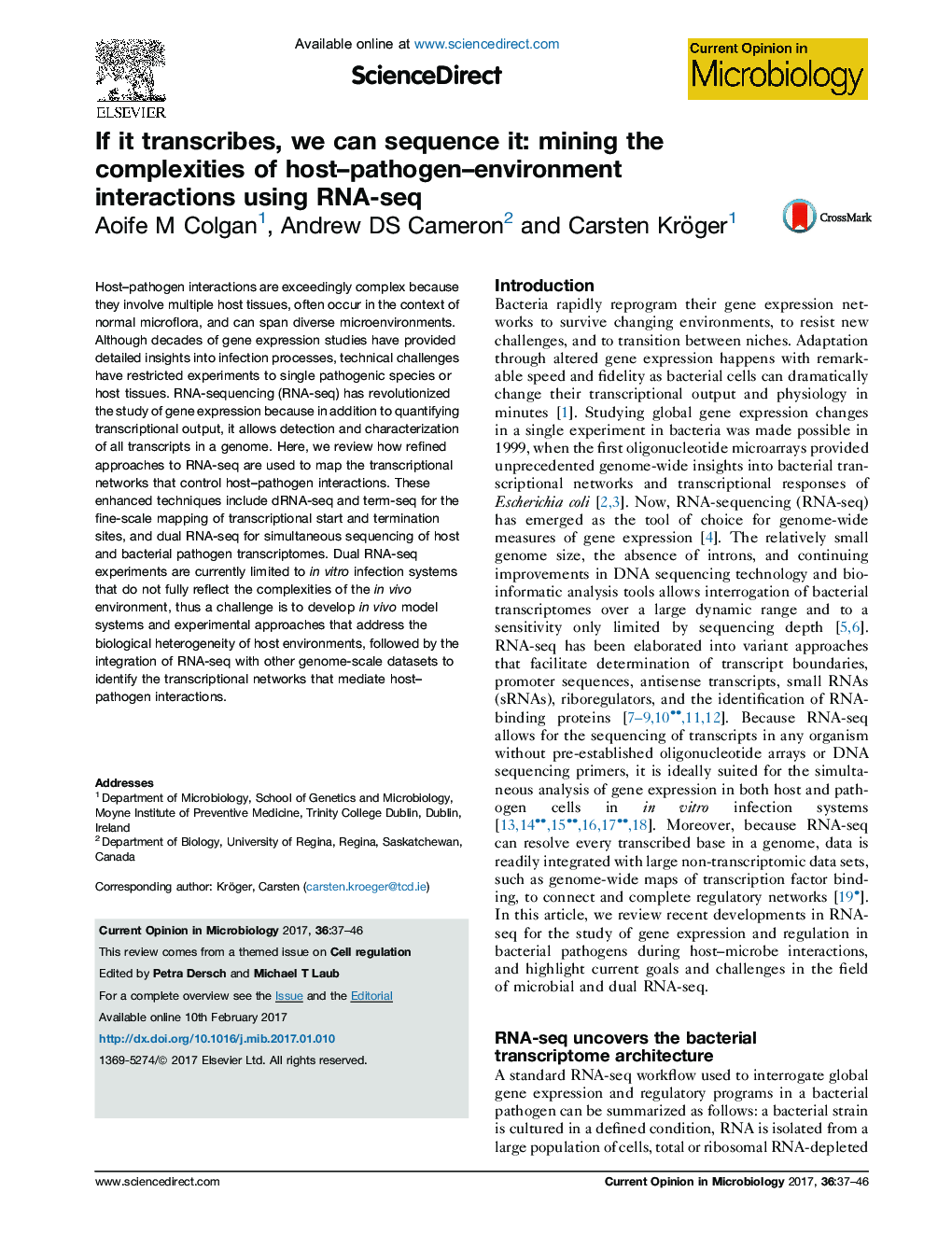| Article ID | Journal | Published Year | Pages | File Type |
|---|---|---|---|---|
| 5671746 | Current Opinion in Microbiology | 2017 | 10 Pages |
â¢Transcriptional profiling using RNA-seq.â¢Dual RNA-seq provides novel insights into host-pathogen interactions.â¢Uncovering regulatory networks with next-generation sequencing.â¢Poly-seq and in vivo transcriptomics: a formidable future challenge.â¢Data sharing, visualization and online community tools.
Host-pathogen interactions are exceedingly complex because they involve multiple host tissues, often occur in the context of normal microflora, and can span diverse microenvironments. Although decades of gene expression studies have provided detailed insights into infection processes, technical challenges have restricted experiments to single pathogenic species or host tissues. RNA-sequencing (RNA-seq) has revolutionized the study of gene expression because in addition to quantifying transcriptional output, it allows detection and characterization of all transcripts in a genome. Here, we review how refined approaches to RNA-seq are used to map the transcriptional networks that control host-pathogen interactions. These enhanced techniques include dRNA-seq and term-seq for the fine-scale mapping of transcriptional start and termination sites, and dual RNA-seq for simultaneous sequencing of host and bacterial pathogen transcriptomes. Dual RNA-seq experiments are currently limited to in vitro infection systems that do not fully reflect the complexities of the in vivo environment, thus a challenge is to develop in vivo model systems and experimental approaches that address the biological heterogeneity of host environments, followed by the integration of RNA-seq with other genome-scale datasets to identify the transcriptional networks that mediate host-pathogen interactions.
